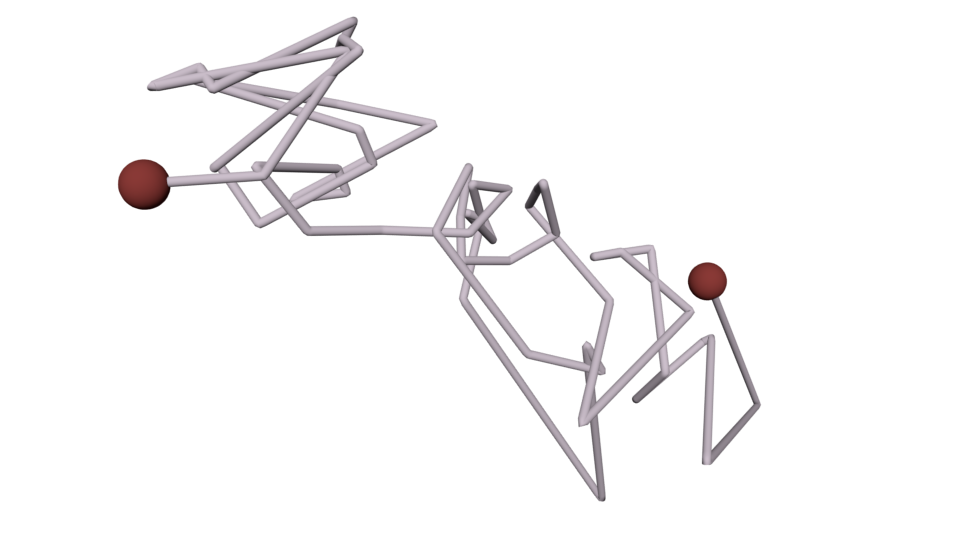Knots in the human genome would greatly impact diverse cellular processes ranging from transcription to gene regulation. To date, it has not been possible to directly examine the genome in vivo for the presence of knots. Recently, methods for serial fluorescent in situ hybridization have made it possible to measure the three-dimensional position of dozens of consecutive genomic loci in vivo. However, the determination of whether genomic trajectories are knotted remains challenging because small errors in the localization of a single locus can transform an unknotted trajectory into a highly knotted trajectory and vice versa. Here, we use stochastic closure analysis to determine if a genomic trajectory is knotted in the setting of experimental noise. We analyze 4727 deposited genomic trajectories of a 2-Mb-long chromatin interval from human chromosome 21. For 243 of these trajectories, their knottedness could be reliably determined despite the possibility of localization errors. Strikingly, in each of these 243 cases, the trajectory was unknotted. We note a potential source of bias insofar as knotted contours may be more difficult to reliably resolve. Nevertheless, our data are consistent with a model in which, at the scales probed, the human genome is often free of knots.
Download “Article” Chromatin_frequently_unknotted.pdf – Downloaded 351 times – 2 MB
Download a copy of the manuscript

